January 15, 2024
Many people assume that prioritizing space for cars is the best way to draw business—after all, people usually drive when they’re shopping and dining, right?
Turns out this perception is often inaccurate. For example, merchants surveyed along York Boulevard in Los Angeles assumed their customers arrived by car (60% to 70%), but only 15% to 30% of customers surveyed reported they arrived by car; more than half reported they walk or bike to the businesses.
According to a study published by the Institute for Transportation & Development Policy, people who bike have actually been found to make shopping and dining trips more often than people who drive, and spend more money per trip. The study also reported that improving access by bicycle to commercial areas results in higher retail sales.
These statements are supported by examples across the United States. A protected bike lane added to Broadway in Seattle saw a 31% increase in food service employment compared to 2% and 16% increases in control areas. Retail employment increased by 13% on Central Avenue in Minneapolis after bike lanes were installed—higher than the 9% increase in the control area a few blocks away. There was also a 52% increase in food sales, which was more than double the increase in the control area.
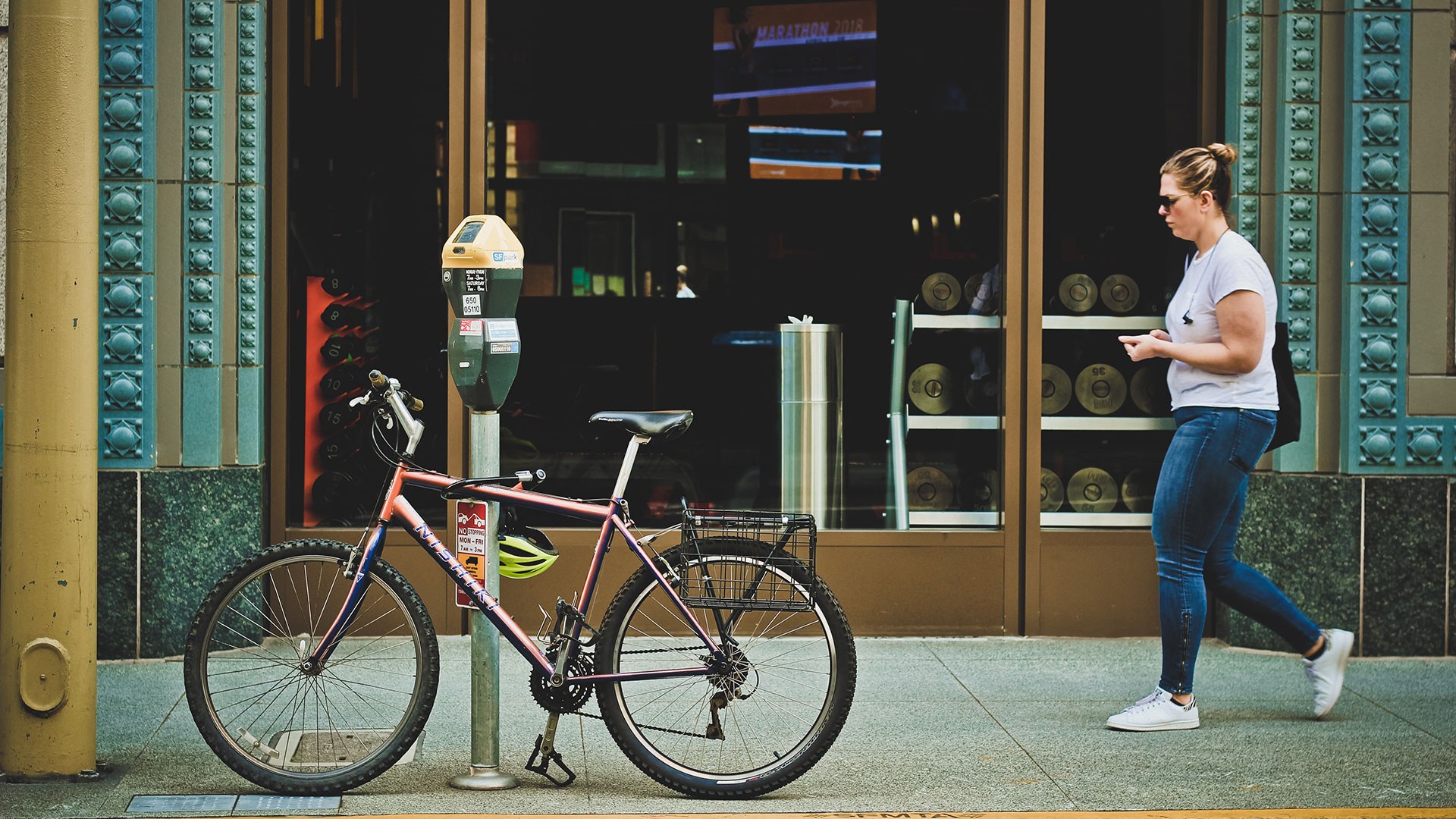
In some studies, people who bike have been found to make shopping and dining trips more often than people who drive, and spend more money per trip.
Applying These Findings to Medford, Oregon
“Do we want Downtown to be a place we drive through, or a place we drive to?” This quote from Suzanne Schroeder, Medford Transportation Commissioner, captured the desire to make multimodal transportation investments in Medford, Oregon that would contribute to a vibrant and prosperous downtown, where safe and comfortable spaces to walk and bike would encourage residents and visitors to come and spend time.
The City had conducted a study on the impact of increased bicycle and pedestrian access on business, which led to the findings above (and more) that point to the economic benefits of active transportation facilities. Multiple adopted City and regional plans, built upon the input of thousands of residents, business owners, and employees, also called for better bicycling facilities along Main Street, Riverside Avenue, Central Avenue, and Court Street.
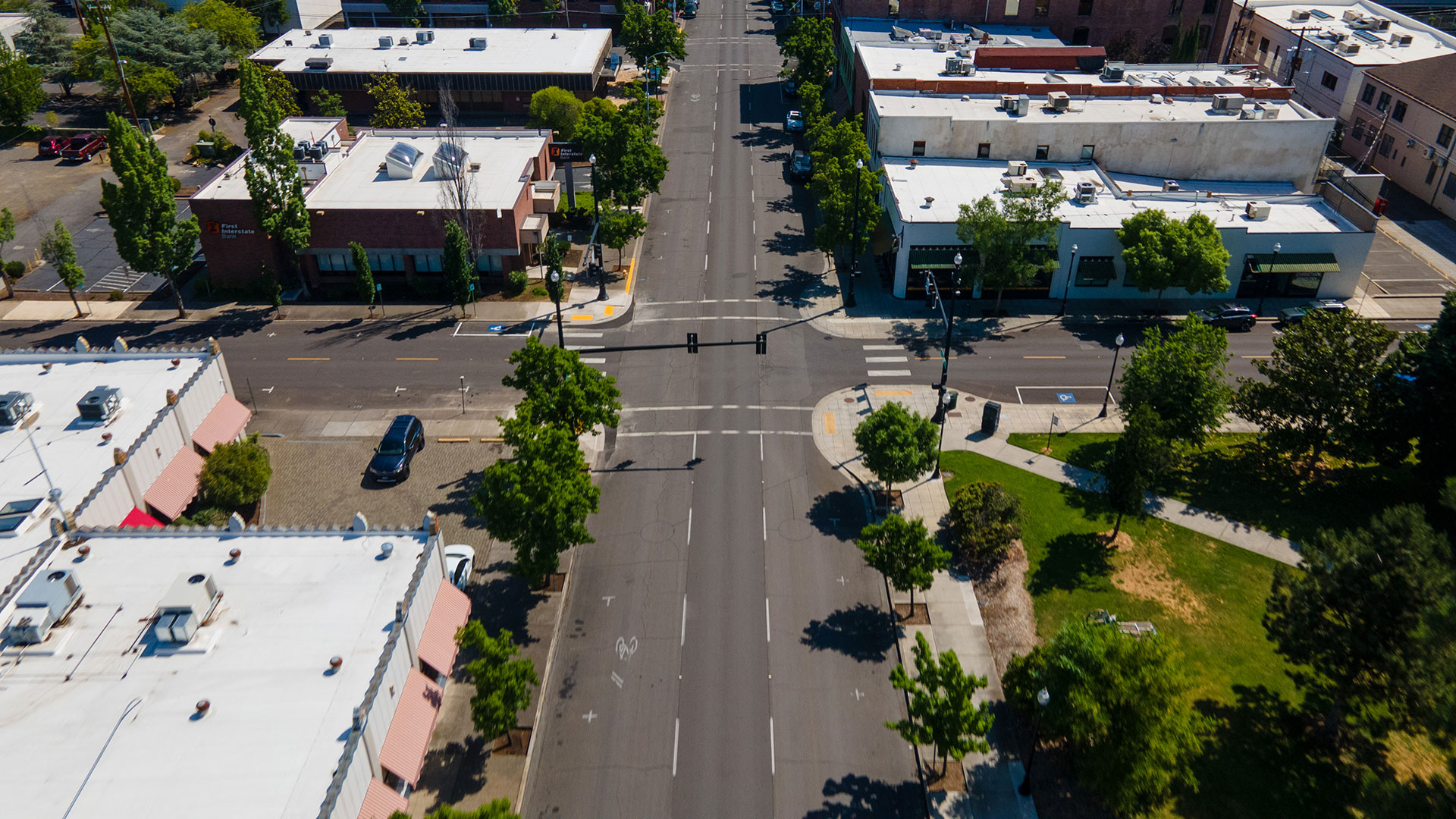
A "before" shot of the City of Medford's downtown. The City sought active transportation facilities that would draw residents and visitors to spend more time downtown.
It was clear that a “multimodal reconfiguration” along the main streets of Medford’s downtown was a shared vision. The question was how, and when—and the answer came through a timely maintenance project.
A Swift + Strategic Approach to Implementation
Through the City’s pavement maintenance program, Main Street and Riverside Avenue in downtown Medford were up for repaving, which meant they would need to be restriped. This opened the opportunity to bundle a multimodal reconfiguration at significantly lower cost.
A Kittelson-led team was tasked with designing bicycling facilities that fit within the existing curb-to-curb roadway as much as possible—in other words, that could be implemented primarily through restriping. We started by reviewing previous plans and planned projects that identified active transportation design concepts for several major corridors in Medford’s downtown. From this review, our team developed a list of 48 preliminary design concepts with various placements and configurations of one- and two-way bicycling facilities. We also developed a set of evaluation criteria and performance measures based on regional goals and policy guidance. With public input, these criteria were used to narrow down the preliminary list of concepts to a set of promising alternatives.
“I don’t currently bike into downtown Medford but with these changes I would!”
- feedback from public outreach
Finally, our team conducted a technical analysis of how each of the most promising concepts would impact traffic and operations. The City of Medford hosted two public meetings through which the study team presented the design alternatives and gathered feedback. Following each of these meetings, the team narrowed down the list of alternatives based on the public’s input, and a final application of the evaluation criteria determined the preferred concept.
A two-way, parking-protected bike lane was selected for Main Street to provide a low stress facility that is comfortable for people of all ages and abilities, increasing connectivity to destinations and reducing out of direction travel. The bike lane was implemented on Main Street when the corridor was repaved in late 2023.
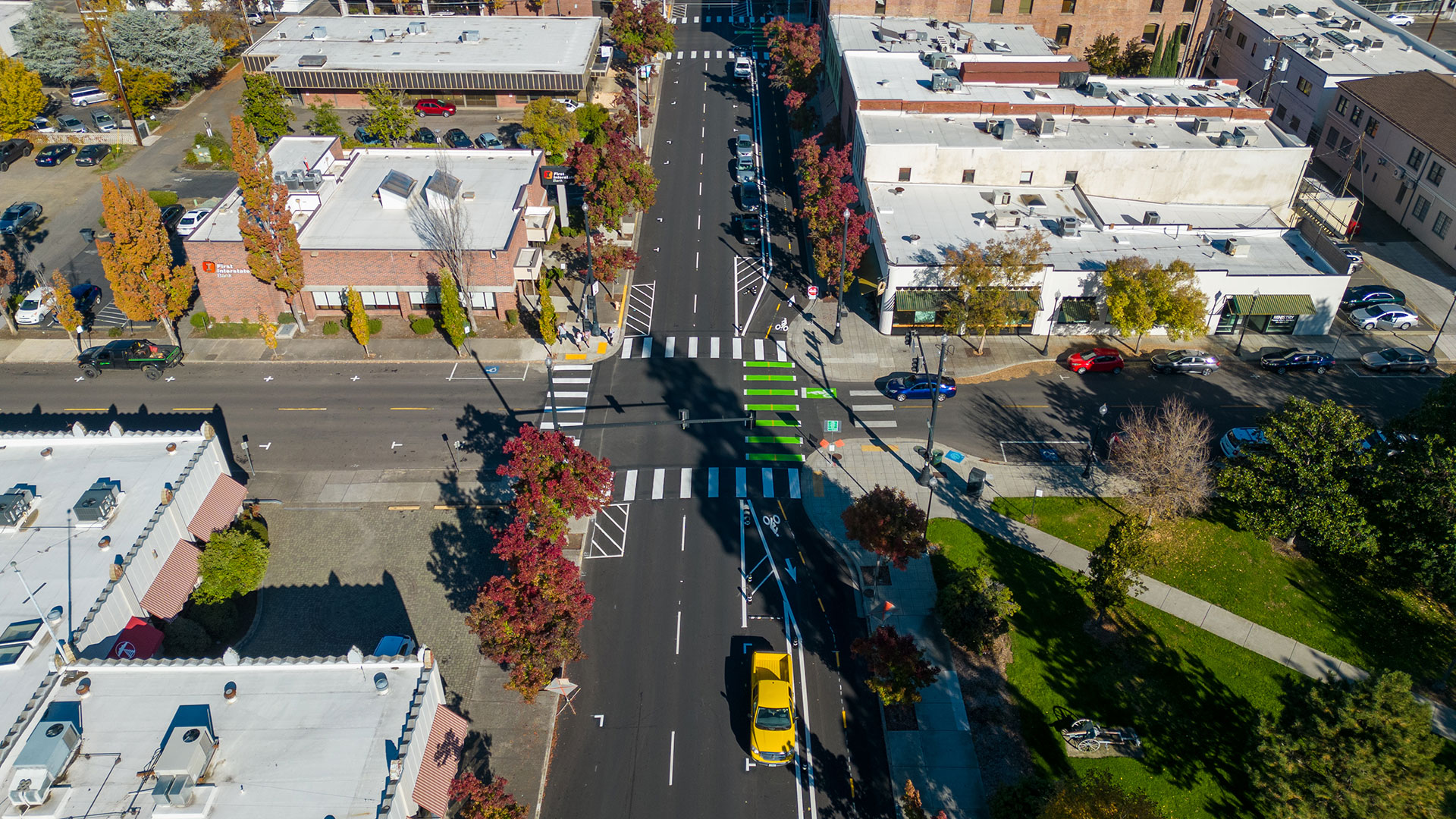
A two-way, parking-protected bike lane was installed on Main Street through repaving.
Downtown Medford’s Bike Lanes: Before & After
Drone photos captured before and after the installation of the bike lane show the dramatic transformation brought about by restriping Main Street.
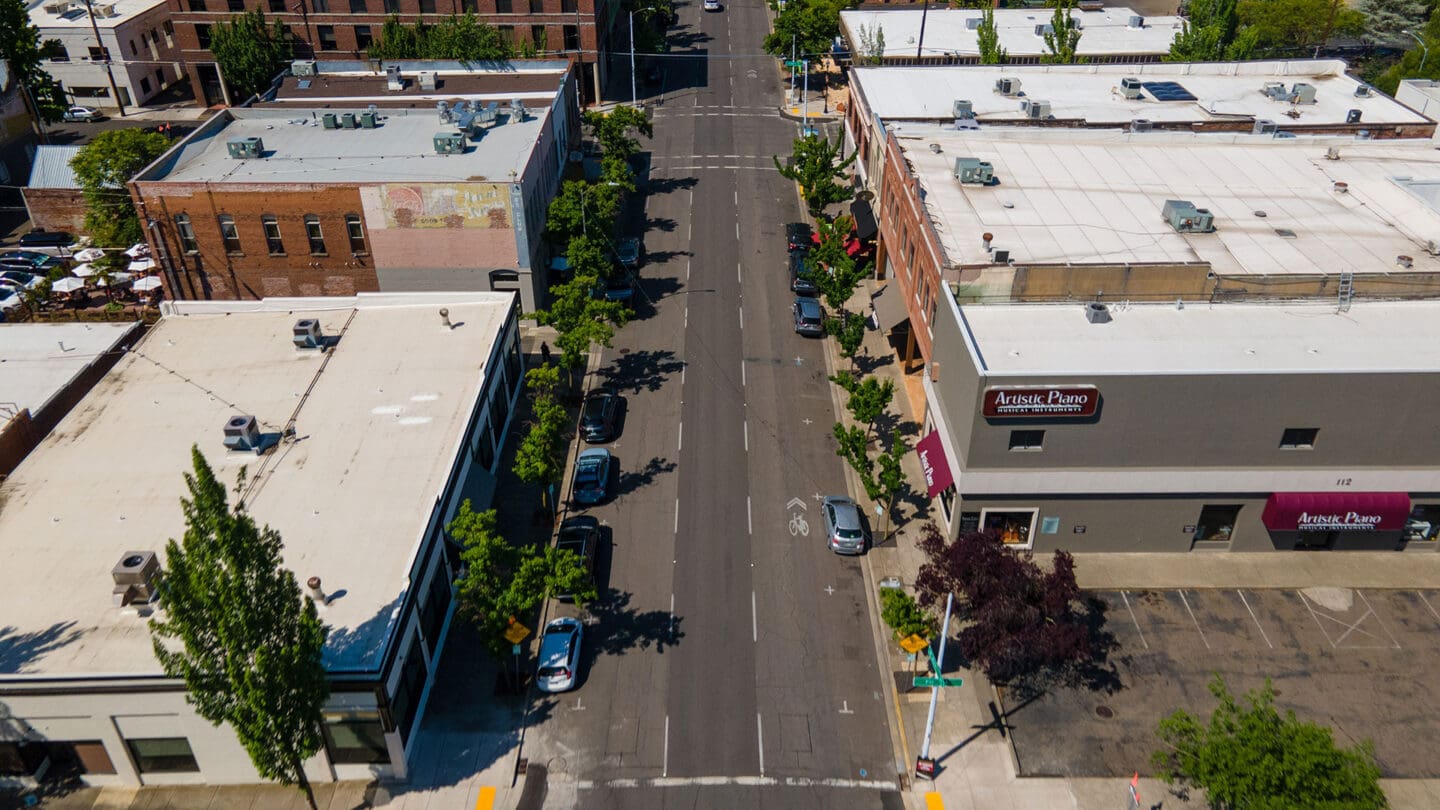
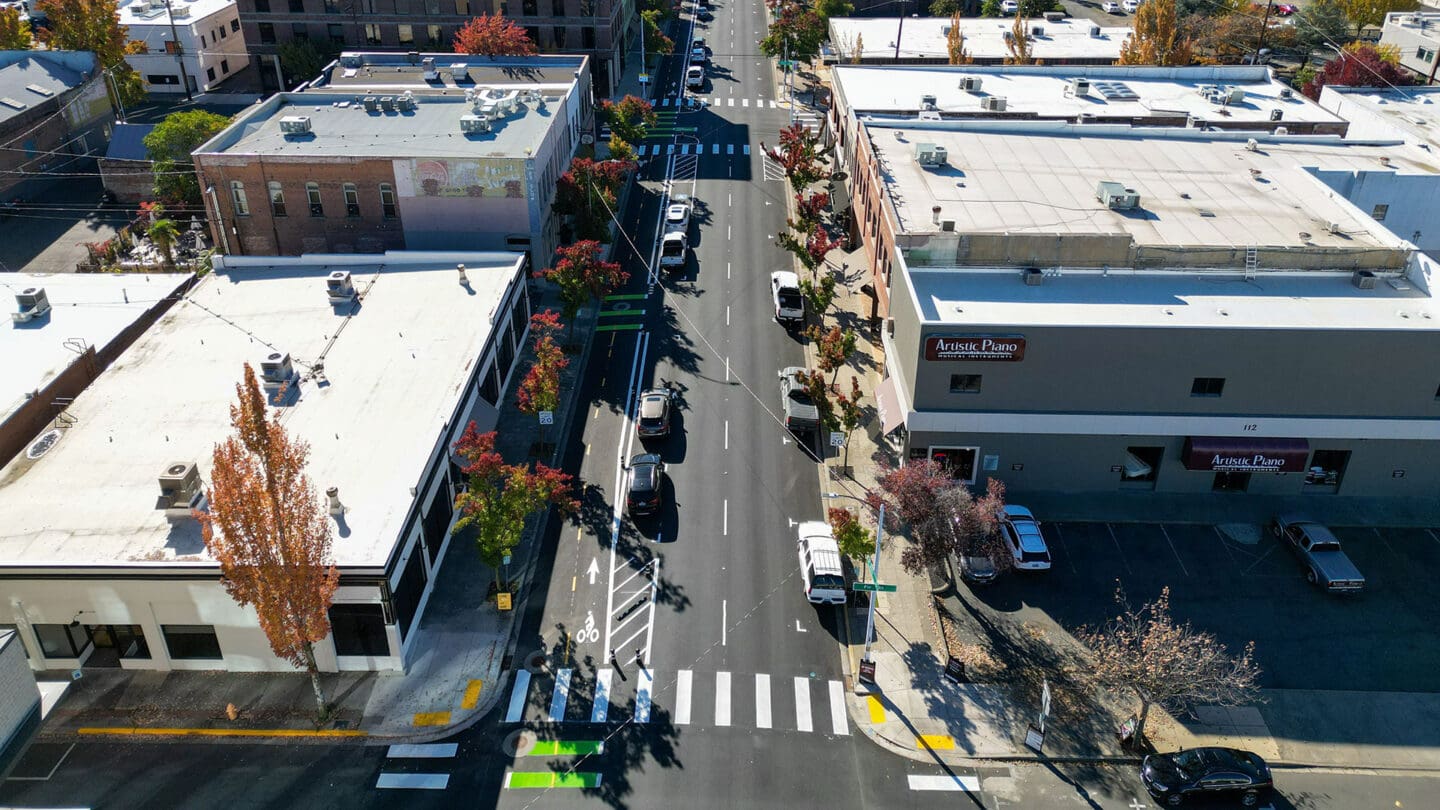
In addition to the bicycling benefits, this reconfiguration was designed to calm traffic, reduce vehicular noise, and in general make Main Street a more attractive place to visit and live—all while having a minimal impact on traffic operations. If anything, people driving will experience a travel time increase of a few seconds, a negligible impact compared to the substantial multimodal benefits.
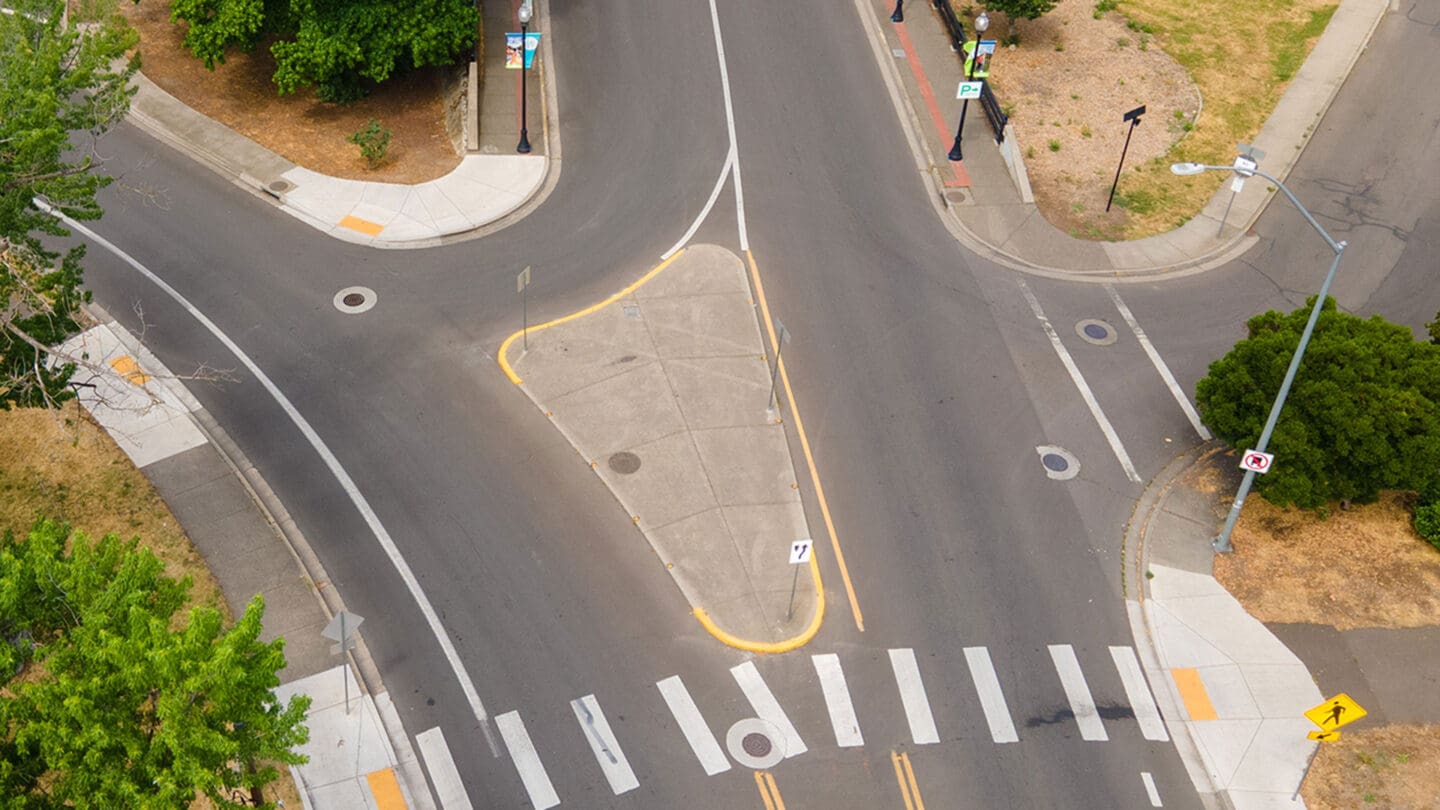
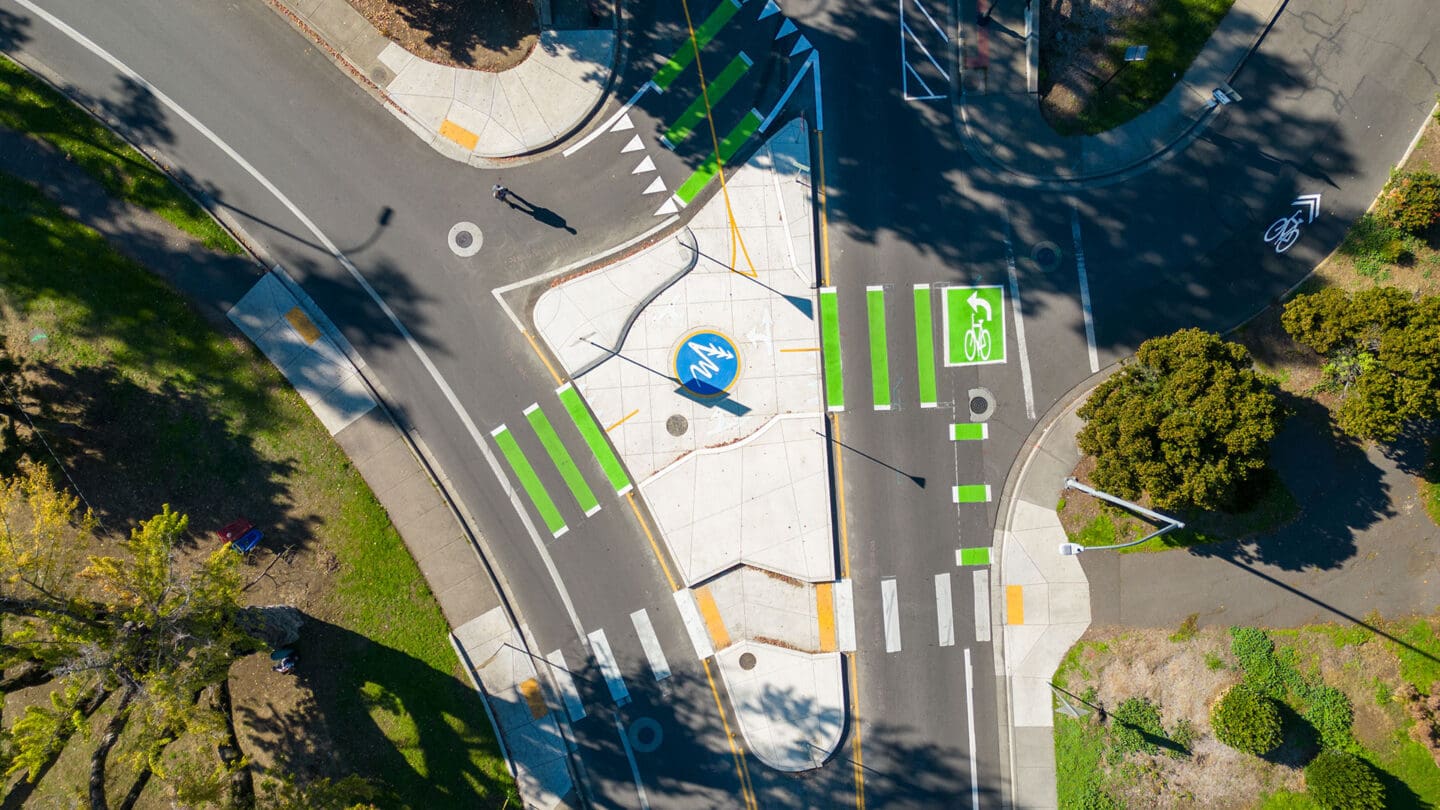
The improvements were also designed to fit the context and character of the community—down to the City of Medford logo on the bicycle roundabout (pictured above)!
Though more data needs to be collected, the City of Medford has observed an increase in bicycling since repaving Main Street. Local businesses have also noticed a change. For example, the Medford Cowork Collective has seen slower traffic speeds on Main Street and say the bike lanes provide a more accessible and welcoming entrance to their facility.
“We’ve noticed that many of our members now choose to bike to our space, and there’s been an increase in pedestrian and cycling activity on Main Street since the introduction of the bike lanes,” said Abigail M. Schilling, founder of Medford Cowork Collective. “This diversification of traffic is great not just for Medford Cowork Collective, but for all local businesses and the community as a whole, as it creates a more connected and accessible city for everyone.”
“We've noticed that many of our members now choose to bike to our space, and there's been an increase in pedestrian and cycling activity on Main Street since the introduction of the bike lanes."
- Abigail M. Schilling, Medford Cowork Collective
For other transportation planners reading this, you know there’s often a long period of time between planning and implementation (or, the chance that planned projects never get implemented at all). This was a gratifying project to work on because of the streamlined path to implementation: capitalizing on the pavement preservation project that was already happening to quickly bring to life the recommendations from regional plans to get more active transportation facilities on the ground.
Bike Lanes Are Not Just for Bicyclists
“This is a great opportunity for the City of Medford to really enhance the safety and visual beautification of downtown,” wrote one resident at a public meeting for the project. This project, and all the research that went into it, shows the impact of bike lanes goes beyond creating comfortable facilities for bicyclists. Safe and attractive spaces for navigating downtown by foot and bike brings an entirely different sense of place to the area; a place where people travel through more slowly, with more awareness of what’s around them, and often stay a while to shop, dine, and gather.
We look forward to tracking the impact of Medford’s new facilities over time. Like so many of the projects we work on, learning more about Medford’s vision for the future and playing a role in it makes us eagerly invested in this town’s success. Our vision is that 20 years from now, when we pay a visit to Medford’s downtown, there will be many more facilities like those on Main Street contributing to a safe and vibrant atmosphere that draws people in (not just through). Reach out if you’d like to learn more about this project!
